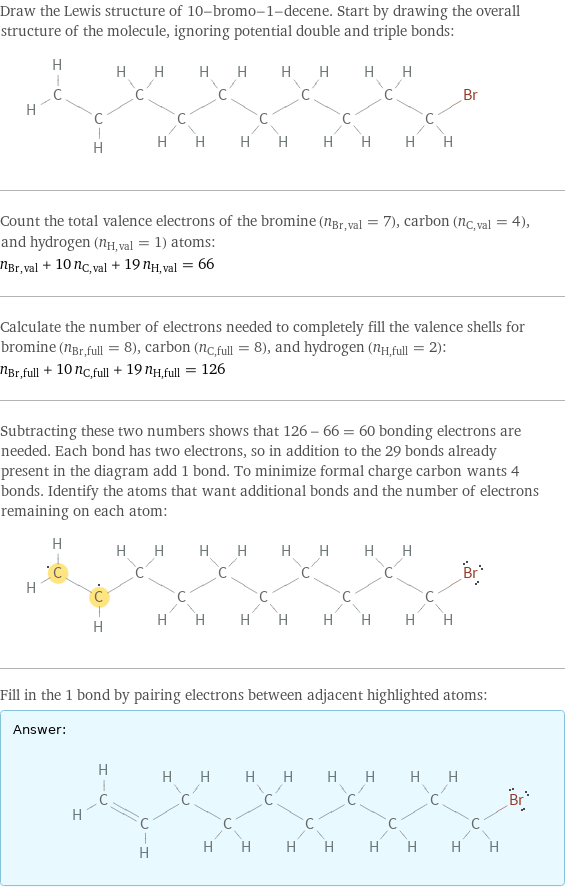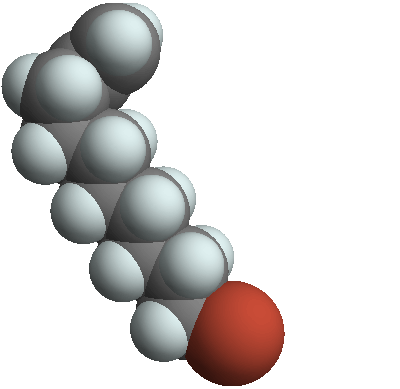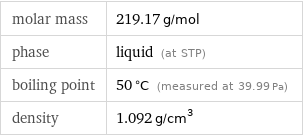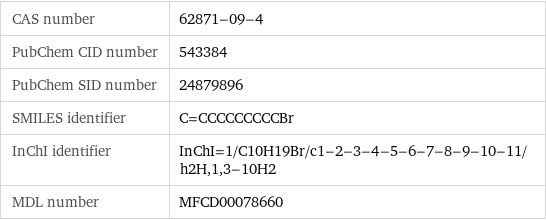Input interpretation

10-bromo-1-decene
Chemical names and formulas

formula | Br(CH_2)_8CH=CH_2 Hill formula | C_10H_19Br name | 10-bromo-1-decene IUPAC name | 10-bromodec-1-ene alternate names | 10-bromodec-1-ene mass fractions | Br (bromine) 36.5% | C (carbon) 54.8% | H (hydrogen) 8.74%
Lewis structure

Draw the Lewis structure of 10-bromo-1-decene. Start by drawing the overall structure of the molecule, ignoring potential double and triple bonds: Count the total valence electrons of the bromine (n_Br, val = 7), carbon (n_C, val = 4), and hydrogen (n_H, val = 1) atoms: n_Br, val + 10 n_C, val + 19 n_H, val = 66 Calculate the number of electrons needed to completely fill the valence shells for bromine (n_Br, full = 8), carbon (n_C, full = 8), and hydrogen (n_H, full = 2): n_Br, full + 10 n_C, full + 19 n_H, full = 126 Subtracting these two numbers shows that 126 - 66 = 60 bonding electrons are needed. Each bond has two electrons, so in addition to the 29 bonds already present in the diagram add 1 bond. To minimize formal charge carbon wants 4 bonds. Identify the atoms that want additional bonds and the number of electrons remaining on each atom: Fill in the 1 bond by pairing electrons between adjacent highlighted atoms: Answer: | |
3D structure

3D structure
Basic properties

molar mass | 219.17 g/mol phase | liquid (at STP) boiling point | 50 °C (measured at 39.99 Pa) density | 1.092 g/cm^3
Units

Liquid properties (at STP)

density | 1.092 g/cm^3 refractive index | 1.466
Units

Chemical identifiers

CAS number | 62871-09-4 PubChem CID number | 543384 PubChem SID number | 24879896 SMILES identifier | C=CCCCCCCCCBr InChI identifier | InChI=1/C10H19Br/c1-2-3-4-5-6-7-8-9-10-11/h2H, 1, 3-10H2 MDL number | MFCD00078660
Safety properties

flash point | 96.67 °C